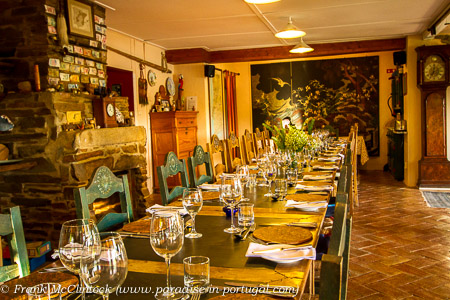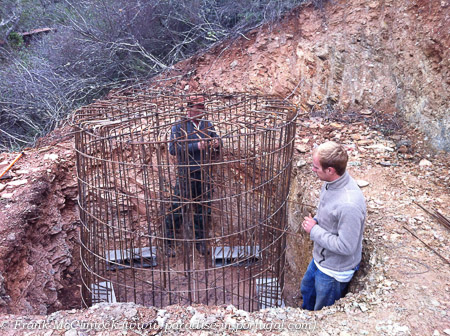
One of the best Sunrises this Spring
It’s about time I did a quick update on what’s been happening at the Quinta over the last couple of months …
Anyone who reads this will know that we’re pretty “Nature Orientated” here and do a fair amount of Nature Trips from the Quinta as “Birding in Portugal“. One of the best times to get down’n’dirty with nature is before anyone gets up so I’ve been seeing a fair few sunrises recently, and they’re always spectacular, but the one above, taken from the top of Foia, was one of the best.

A misty morning at the Top of the World
Even when we left “late” after the sun had risen, we were treated to wonderful views from the “Top of the World”, especially during the early Spring with the mist rising out of the valleys surrounding the Quinta.

The Water Rail Hide
These later mornings have often been expeditions to the new “Water Rail Hide” down in Santa Clara which has proved a real success, able to seat eight people fairly easily and with wicked views over a slow moving part of the River Mira where something always seems to be happening.

Cetti’s Warbler
One of the stars of the show there has been Cetti’s Warblers, normally such a difficult species to get a glimpse of, and of course we’ve had the resident pair of Water Rails showing well most days …
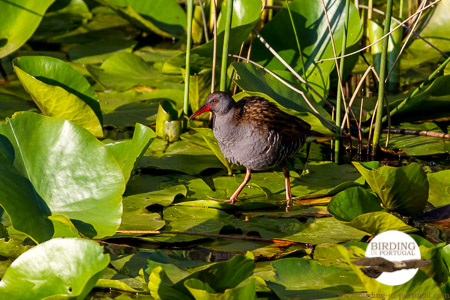
“Our” Water Rail
There were several weeks when they were noticeable by their absence and we were concerned that they’d been taken by one of the Otters that live along this stretch of the river,

One of the Otters
and then when we saw the Polecat with a Water Vole in its mouth we were doubly sure that they’d been eaten by these fierce predators,

The Polecat with its Water Vole prey
but a week later they were back in view again so we needn’t have worried.

Our resident Kingfisher
The Hide is a great place to see Kingfishers also, as well as Common Waxbills, who nested literally underneath us.
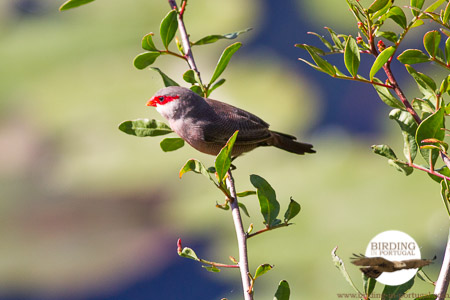
Common Waxbill
Maybe it wont be that long before we get to see another escapee there, as it’s perfect habitat for Black-headed Weavers, who seem to be found in ever-increasing numbers down in the Algarve. This is the male,

Male Black-headed Weaver
and this the female. I’m not sure really which is the more beautiful …

Female Black-headed Weaver
But it wasn’t just birds and mammals in the Water Rail Hide. There were Dragonflies and damselflies – like this female Copper Demoiselle,

Copper Demoiselle
and a great assortment of Butterflies too. Western Dappled Whites,

Western Dappled White
Spanish Gatekeepers,

Spanish Gatekeeper
Southern Scarce Swallowtails,
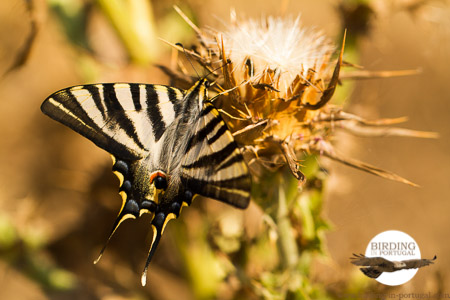
Southern Scarce Swallowtail
Berger’s Clouded Yellows,

Berger’s Clouded Yellow
and a fair smattering of Painted Ladies,

Painted Lady
among many others. The countryside roundabouts has been, as always, stunning this Spring and the flowers unsurpassable. Huge swathes of Corn Marigolds, Viper’s Bugloss, Camomile Daisies and Poppies seemingly everywhere one looks,
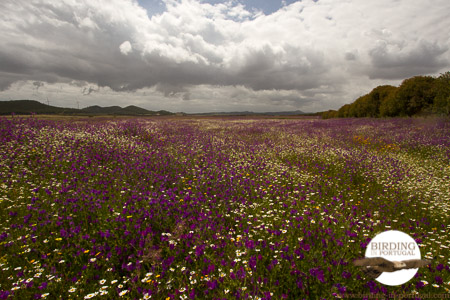
Spring Flowers
and the Butterflies have been making full use of them all.

Spring Flowers
My mother used to say that this is what the British countryside used to look like; I wonder whether my children will be saying the same to their offspring about the Portuguese countryside in years to come. I certainly hope not of course, but I have noticed a sharp decline in the numbers of some bird species that used to be very common. Bee-eaters for instance seem to be becoming fewer and harder to find,

Bee-eater
though other species seem to be on the increase. Rollers are being aided by nest boxes put in place by SPEA and the ICNF and there are some days when we see more of them than the Bee-eaters that used to be so common.

Roller
Barn Swallow numbers, from my very limited understanding, appear to have stabilised, and though I am afraid that this is only temporary, we’re lucky enough to still have reasonable numbers around the Quinta.

Barn Swallow
Great Bustard numbers are increasing and Portugal is apparently the only country in the world where this is happening, (barring of course the UK who continue to import them to their re-introduction scheme), and though they disperse at this time of year now that their breeding season is over, it is still easy enough to see double figures on any day out to the Plains.

Great Bustards
Montagu’s Harrier numbers appear to be stable,

Montagu’s Harrier
and this might be due to the availability of huge numbers of prey items such as Iberian Hares out there. I have never seen so many as I have this year. Wherever I go in the Alentejo they seem to be in greater concentrations than ever before and several times I have come across more than five together, (I cropped one out of this picture!),

Hare today, gone tomorrow
and though these are not high on the diet of Short-toed Eagles, they are a prey item, especially when young, and may have some bearing on the increasing number of these birds also.

Short-toed Eagles scrapping above the Plains
One species that we’ve been lucky enough to see a huge number of this year is my favourite, and I beg your indulgence therefore that I post up here three, (yes three!), pictures of them, but they are extremely special, quite rare and definately sexy, so here you go, tararraarrraaa boom, please give a big hand for Collared Pratincoles!
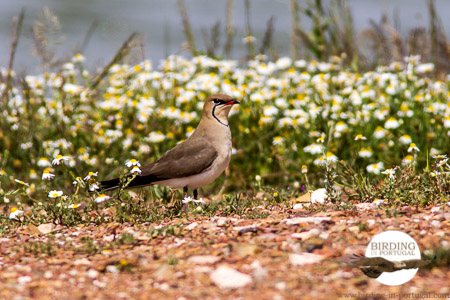
Collared Pratincole
A couple of years ago I was told of a place that regularly hosted breeding pairs of these birds and visiting it one day I came across the owner of the land in question who was there issuing instructions to an engineer to deepen the lake around which the Collared Ps were nesting. As a ground nesting species they are particularly vulnerable so I asked him if he would be so good as to leave an island where they could breed in peace, to which he kindly agreed.

Collared Pratincoles
What a success! That colony, previously limited to just a few pairs, now has over 50 and not only are they increasing in numbers but they’re also easy to appreciate as the island is only just offshore and can be approached without disturbing the birds, hence photo opportunities are easy and it’s really not difficult to get shots like those above – or the one below.

Collared Pratincole
The area nearby has also attracted a few pairs of Black-eared Wheatears this year so they’ve been an added bonus whenever we visit.
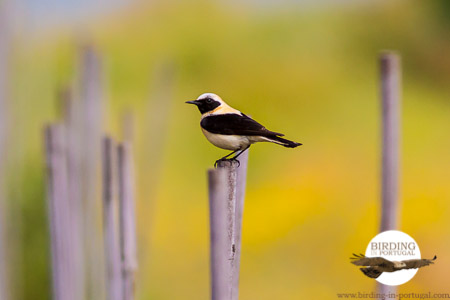
Black-eared Wheatear
What else? Every Nature trip has had its stars – like the Yellow Wagtails breeding on the coast and giving us such good views this year,

Yellow Wagtail
but sometimes we haven’t had to go far at all. The Quail below was pecking around right outside the back door earlier on this year, and this picture – not the best I’m afraid – was actually taken out of the kitchen window …
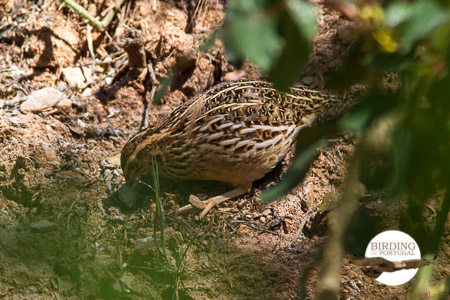
The Quail in the garden
All in all it’s been a busy Spring as I’m sure you can see, and I should get on now with some essential maintenance around the Quinta, so I’ll sign off, wishing you all well, and letting this Hoopoe take the bow.

Hoopoe




